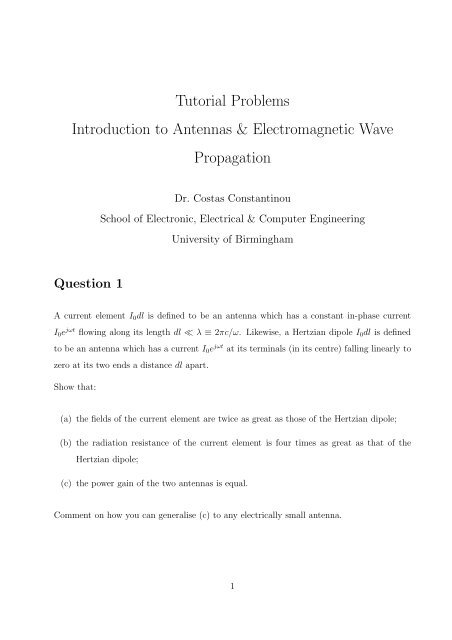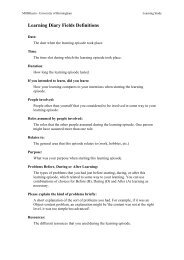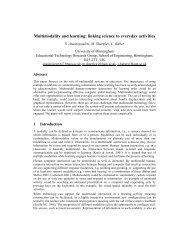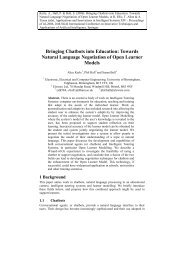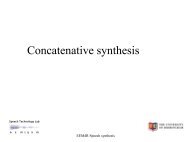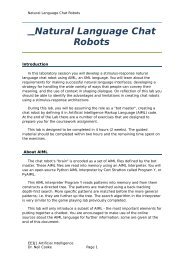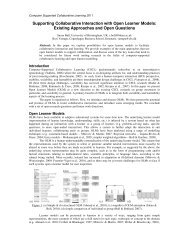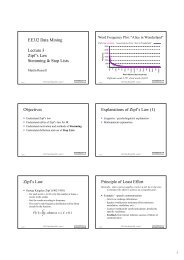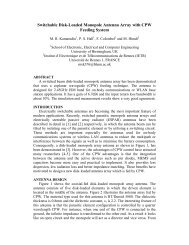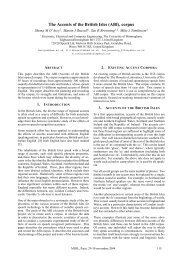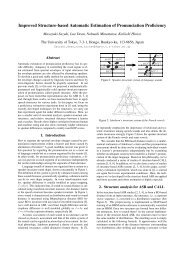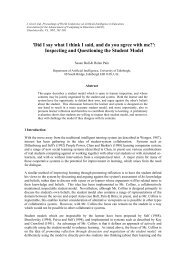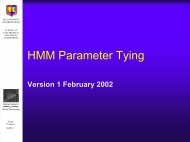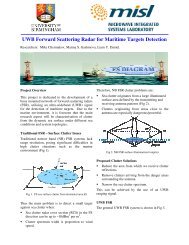Tutorial problem sheet - University of Birmingham
Tutorial problem sheet - University of Birmingham
Tutorial problem sheet - University of Birmingham
You also want an ePaper? Increase the reach of your titles
YUMPU automatically turns print PDFs into web optimized ePapers that Google loves.
<strong>Tutorial</strong> Problems<br />
Introduction to Antennas & Electromagnetic Wave<br />
Propagation<br />
Dr. Costas Constantinou<br />
School <strong>of</strong> Electronic, Electrical & Computer Engineering<br />
<strong>University</strong> <strong>of</strong> <strong>Birmingham</strong><br />
Question 1<br />
A current element I 0 dl is defined to be an antenna which has a constant in-phase current<br />
I 0 e jωt flowing along its length dl ≪ λ ≡ 2πc/ω. Likewise, a Hertzian dipole I 0 dl is defined<br />
to be an antenna which has a current I 0 e jωt at its terminals (in its centre) falling linearly to<br />
zero at its two ends a distance dl apart.<br />
Show that:<br />
(a) the fields <strong>of</strong> the current element are twice as great as those <strong>of</strong> the Hertzian dipole;<br />
(b) the radiation resistance <strong>of</strong> the current element is four times as great as that <strong>of</strong> the<br />
Hertzian dipole;<br />
(c) the power gain <strong>of</strong> the two antennas is equal.<br />
Comment on how you can generalise (c) to any electrically small antenna.<br />
1
Question 2<br />
A half-wave dipole driven in its balanced mode has a sinusoidal current Ie jωt at its terminals<br />
and its electric field vector in the far field is given by,<br />
E θ = IZ 0cos ( π<br />
cosθ) 2<br />
2πr sinθ<br />
e j(ωt−kr)<br />
where Z 0 is the impedance <strong>of</strong> free space, r is the distance from the antenna and θ is the angle<br />
defining the point (r,θ) measured from the axis <strong>of</strong> the dipole.<br />
(a) Calculate the radiation resistance <strong>of</strong> a vertical quarter wavelength monopole situated<br />
on an infinite perfectly conducting ground plane.<br />
(b) Comment on the feed mechanisms required by the dipole and ground-based monopole<br />
antennas.<br />
Note: It is given that ∫ π/2<br />
0<br />
cos 2 ( π 2 cosθ)<br />
sinθ<br />
dθ ≃ 0.609.<br />
Question 3<br />
(a) Twoparallel,verticalλ/2dipolesarespacedadistanceλ/2apart. Themutualimpedance<br />
Z 12 between the dipoles at this separation is (−13−j30)Ω and the self-impedance <strong>of</strong><br />
each dipole is (73 + j42)Ω. Given that the currents in the two dipoles are equal in<br />
magnitude and phase by symmetry arguments, find the power gain <strong>of</strong> this two-dipole<br />
array, if the maximum far-field radiation magnetic field <strong>of</strong> each dipole at range r is<br />
|H φ | = I<br />
2πr .<br />
(b) The power gain G <strong>of</strong> any antenna can be written as, G = 4πAe<br />
λ 2 , where A e is the effective<br />
receiving area andλisthewavelength <strong>of</strong>operation. Findanexpression interms<strong>of</strong>open<br />
circuit voltage and radiation resistance for the maximum power which can be delivered<br />
to a matched load connected to the above two-dipole array, when it is irradiated by<br />
a vertically polarised uniform plane wave <strong>of</strong> electric field magnitude E i . State clearly<br />
any assumptions you make.<br />
2
Note: The gain <strong>of</strong> an isolated λ/2 dipole is G ≃ 1.64.<br />
Question 4<br />
It is given that for a vertical current element I 0 dl at the earth’s surface the radiation field at<br />
a distant point also at the earth’s surface is given by,<br />
|E z | = 60kI 0dl<br />
A s<br />
r<br />
where k is the free-space wavenumber and A s is the attenuation constant due to lossy ground.<br />
Assuming that the radiation resistance <strong>of</strong> the current element is the same as in free space for<br />
equal lengths <strong>of</strong> element, show that,<br />
|E z | =<br />
√<br />
180P<br />
r<br />
A s<br />
where P is the radiated power in Watts and r is the range in metres.<br />
Question 5<br />
The electrical characteristics <strong>of</strong> the D-layer <strong>of</strong> the ionosphere through which a 5 MHz radio<br />
beam passes are such that it can be represented approximately by an effective permittivity<br />
ǫ 0 and conductivity σ = ǫ 0 νωp/ω 2 2 where ǫ 0 = 8.854×10 −12 Fm −1 , ν = 10 6 collisions/m 3 /s<br />
and ω p = 3.214 × 10 12 rad 2 s −2 . Show that if the conduction current is much less than<br />
the displacement current the propagation attenuation constant α is approximately equal to<br />
σZ 0 /2, where Z 0 is the impedance <strong>of</strong> free space. Hence find the attenuation <strong>of</strong> the above<br />
signal produced in the ionosphere by a vertical path <strong>of</strong> upward length 30 km.<br />
3


